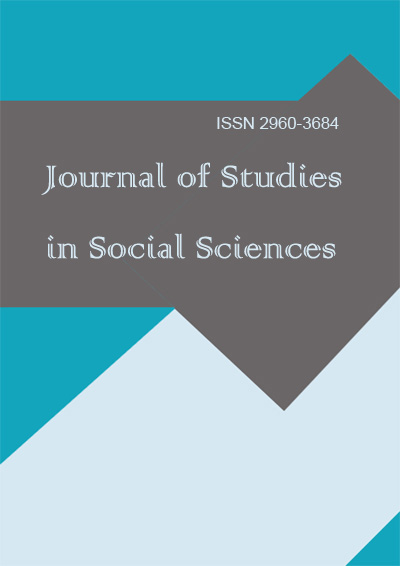Aims & Scope
Journal of Studies in Social Sciences is a peer-reviewed journal that publishes papers in all aspects of Social Sciences and Humanities, including but not limited to: Anthropology, Archaeology, Criminology, Economics, Education, History, Linguistics, Communication studies, Political science, International relations, Sociology, Human geography, Psychology, and elements of other fields as well, such as Law, Cultural studies, Environmental studies, and Social work.
ISSN: 2960-3684
Authors should ensure that
The manuscript submitted to the journal of studies in social sciences has not been previously published elsewhere and is not under consideration by any other journal simultaneously. Submitting the same manuscript to multiple journals is unethical and represents a breach of integrity.
Authors should also avoid redundant publications, meaning publishing substantially the same work in multiple articles or journals, as this can lead to misleading or duplicated information in the academic community.
By adhering to this criterion, authors demonstrate their commitment to upholding standards of originality, avoiding duplication, and preventing potential conflicts arising from redundant or simultaneous submissions. These practices promote the ethical dissemination of research findings and ensure credibility and quality in the field of social sciences.
Author Guidelines: link.
Publication Frequency: Continuous.
Open Access Policy
Journal of Studies in Social Sciences is an open access journal, published under an Attribution 4.0 International (CC BY 4.0). All articles are published in fully open and free access and authors retain the copyright of their articles.

Vol 24 (2025)
Table of Contents
- Research Article
Jane Addams Progenitor of Immersive, Participatory, Community-Based Research: Correcting Attribution Oversight of Participatory Research Method PDF Petina J.D. Powers, J.L. Donaldson This study serves to correct an oversight that attributed pioneering researcher Jane Addams’ (1860-1935) methodology to other scholars. Today, Addams’s participatory research is widely accepted and used. Participatory Research is alternatively referred to as: Community-Based Participatory Research, Participatory Action Research, Participatory Sociology, Proactive Community Based Research, and Participatory Qualitative Research. Addams developed her methodology during cultural work among Chicago’s immigrant communities. The method for this study is theoretically guided by textual analysis and archival research. The data is from archival historical sites, extant literature, news sources, biographies, and Jane Addams numerous publications. As we strive to attain equality and equitability in our research and in our teaching, we must strengthen the presence of researchers and educators who were canonically marginalized. We do so by providing information that properly attributes strategies, methods, or theories to the rightful progenitors. - Research Article
Relevance of Land Tenure Security to Rural Land Use Planning PDF Gbenga John Oladehinde The study review literatures on the relevance of land tenure security in rural land use planning. The introductory part of the paper gives background information about land, land tenure security, and land use planning with an emphasis on disadvantaged groups known as vulnerable in rural areas. A literature review, which forms another section of the work, reveals the in-depth concept of rural land use planning, land tenure, and land tenure security. The latter part of the paper examined the relevance of land tenure security in rural land use planning. Based on the literature reviewed, the study discovered that land tenure security is relevant in rural land use planning in the following ways: sustainable use of land, improvement in land productivity, livelihood security, sustainable community, land use conflict, and dispute resolution, poverty alleviation, reduction in environmental degradation, and food security. The study concluded that land tenure security is interlinked with rural land use planning and should be considered an important issue for rural development.